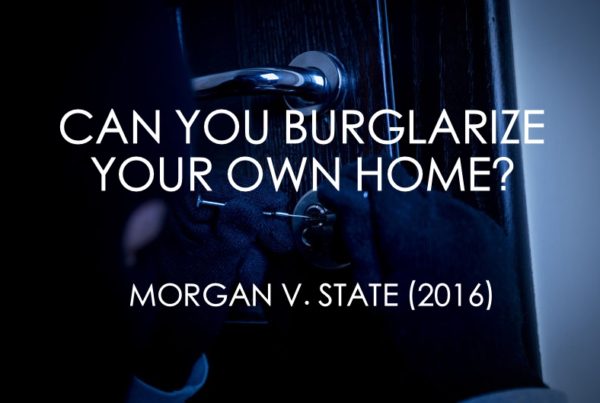 Somehow I let this case slip down in my pile of blogworthy CCA cases. It was released in November 2011. Sorry ‘bout that.
Somehow I let this case slip down in my pile of blogworthy CCA cases. It was released in November 2011. Sorry ‘bout that.
Goad v. State (Tex. Crim. App. 2011) presents some interesting facts. Facts that almost sound like they are out of a law school hypothetical. Here is the skinny version:
Goad and a friend knock on a neighbor’s door and ask if she has seen his dog. They also ask if they can come into the house and look for the dog. The State thinks that they were “casing” the house at this point. After Goad leaves, the neighbor pulls her car around back so that Goad will think she is not home, hoping that he will not come back to bother her anymore. Fifteen minutes later, the neighbor notices the curtains in her front room moving and then she sees Goad and his friend stick their heads through the window. The neighbor screamed and then Goad and his friend retreated. The neighbor called the police and Goad was later apprehended.
The State charged Goad with Burglary of a Habitation, on the theory that Goad entered his neighbor’s house with the intent to commit theft. At trial, Goad requested an instruction on the lesser-included offense (LIO) of Criminal Trespass, arguing that he did not intend to steal anything, but only to look for his lost dog. The trial court refused to give the LIO instruction and Goad was convicted of Burglary of a Habitation.
The 11th District Court of Appeals (Eastland) held that the trial judge erred in refusing to give the LIO instruction:
[T]he jury rationally could have found Goad guilty only of criminal trespass because the jury could have believed that Goad was looking only for his dog.
On State’s petition for discretionary review, the Texas Court of Criminal Appeals explained that for Criminal Trespass to be an LIO of Burglary…
[t]here must be some evidence directly germane to the lesser-included offense for the finder of fact to consider before an instruction on a lesser-included offense is warranted. …Anything more than a scintilla of evidence is sufficient to entitle a defendant to a lesser charge.
The State’s basic argument against the LIO instruction was that there was no “affirmative evidence” to negate the defendant’s intent to commit theft. However, Judge Keasler wrote, “[w]e must consider all of the evidence admitted at trial, not just the direct evidence of a defendant’s intent.” The fact that the defendant had knocked on the door looking for his dog 15 minutes earlier, and the fact that he did not carry any traditional burglary tools, while not direct evidence of his lack of intent, were enough for the CCA to hold that an LIO instruction should have been given. The CCA affirmed the Court of Appeals.
Presiding Judge Keller concurred, noting that “juries are entitled to choose among multiple reasonable inferences, as long as each inference is supported by the evidence presented at trial.”
Judge Alcala concurred, but wrote separately in an effort to point out that, in her opinion, the majority failed to specify the standard of appellate review under which the case was being considered. This issue was apparently very important to Judge Alcala, because her concurring opinion is 16 pages in length (longer than the majority opinion and Presiding Judge Keller’s opinion combined).









